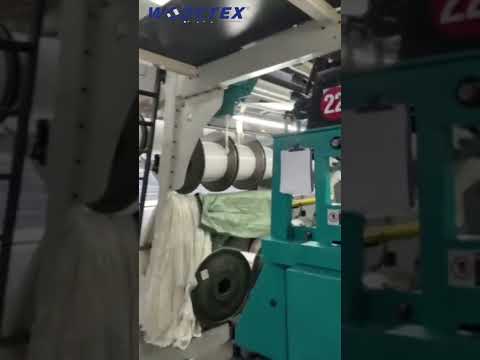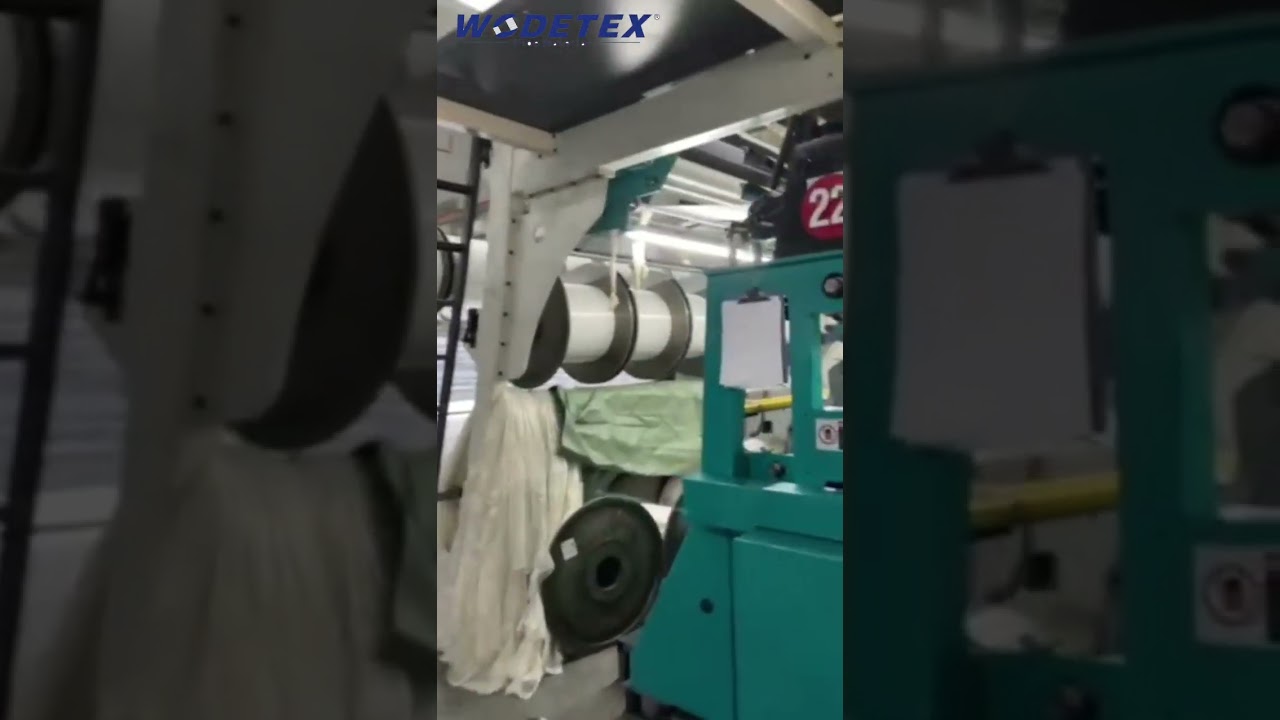Mesh fabric is a versatile and innovative material that has revolutionized the world of textiles. With its intricate network of interwoven fibers, this fabric offers a unique combination of breathability, durability, and style. Whether used in athletic apparel, home furnishings, or even industrial settings, mesh fabric never fails to impress.
One of the most remarkable features of mesh fabric is its exceptional ventilation properties. The open structure of the fabric allows air to circulate freely, keeping you cool and comfortable even in the hottest weather. Say goodbye to sweaty and uncomfortable clothing!
Beyond its breathability, mesh fabric is also renowned for its remarkable strength and durability. The interlocking fibers create a robust and resilient fabric that can withstand heavy use and frequent washing. This makes it an excellent choice for sports uniforms, backpacks, and even outdoor furniture.
But mesh fabric is not just about function—it’s also about style. The unique texture and pattern create a visually appealing aesthetic that adds a touch of modernity to any design. Whether you’re looking to create a chic athleisure look or add a contemporary twist to your home decor, mesh fabric offers endless possibilities.
So, if you’re on the lookout for a material that combines breathability, durability, and style, look no further than mesh fabric. Its interwoven fibers, exceptional ventilation properties, and eye-catching design make it a must-have in any fashion-forward individual’s collection.

The Versatility of Mesh Fabric Material
Mesh fabric material has become increasingly popular in recent years, and for good reason. Its unique structure and properties make it a versatile choice for various applications. Whether you’re looking for breathable clothing options, durable outdoor gear, or innovative architectural solutions, mesh fabric material has you covered. In this article, we will explore the many benefits and uses of mesh fabric material.
1. Enhanced Breathability for Clothing
Mesh fabric is renowned for its exceptional breathability, making it an ideal choice for clothing items. Traditional fabrics like cotton or polyester can often trap heat and moisture against the skin, leading to discomfort and unpleasant odors. However, mesh fabric allows air to flow freely, promoting ventilation and keeping the wearer cool and dry.
Mesh fabric is commonly used in athletic wear and activewear due to its ability to wick away sweat and moisture. The open structure of the mesh allows perspiration to evaporate quickly, preventing the build-up of moisture and reducing the risk of chafing and irritation.
Additionally, mesh fabric is often utilized in undergarments and lingerie, as it provides a lightweight and breathable alternative to traditional materials. Its unique properties allow for increased comfort and improved overall hygiene.
2. Durability and Strength for Outdoor Gear
Mesh fabric material is also highly valued for its durability and strength, making it an excellent choice for outdoor gear. Whether you’re in need of backpacks, tents, or outdoor furniture, mesh fabric can withstand the rigors of nature and heavy use.
One of the key advantages of mesh fabric is its resistance to tearing and abrasion. The interlocking fibers create a strong and flexible structure, ensuring that the material can withstand rough handling and harsh weather conditions. Additionally, mesh fabric is often coated with water-resistant or UV-resistant treatments, further enhancing its durability and longevity.
Outdoor enthusiasts and adventurers can rely on mesh fabric gear to provide the necessary protection and longevity needed for their explorations. From camping trips to hiking expeditions, mesh fabric material is a reliable and long-lasting companion.
3. Innovative Architectural Applications
Mesh fabric material is not limited to clothing and outdoor gear; it has also found its way into innovative architectural applications. Mesh fabrics are increasingly being used in building facades, interior design, and even art installations.
One of the main advantages of mesh fabric in architecture is its ability to filter sunlight. By strategically placing mesh fabric panels on building exteriors, architects can control the amount of light entering the structure, reducing glare and heat gain. This not only enhances the comfort of the occupants but also reduces energy consumption by minimizing the need for artificial lighting and cooling.
Mesh fabric can also be utilized for acoustic purposes. Its open structure allows sound waves to pass through, reducing echoes and reverberations in large spaces such as auditoriums or concert halls. Additionally, mesh fabric can be used as a decorative element, adding texture and visual interest to architectural designs.
4. Efficient Filtration Systems
Mesh fabric material is widely used in filtration systems due to its ability to efficiently trap and separate particles. The interwoven fibers create a mesh with precise openings, allowing for the filtration of various substances, including liquids, gases, and even solid particles.
Mesh fabric filters are commonly used in industries such as automotive, aerospace, and healthcare. They can effectively remove contaminants and impurities from fluids, ensuring the quality and performance of the final product. Additionally, mesh fabric filters can be easily cleaned or replaced, making them a cost-effective and sustainable choice.
From engine oil filters to air purifiers, mesh fabric plays a crucial role in maintaining the cleanliness and efficiency of various systems.
5. Creative Design Possibilities
Mesh fabric material offers endless creative design possibilities, making it a favorite among fashion designers, artists, and interior decorators. The transparency and textural qualities of mesh fabric allow for unique and eye-catching creations.
In fashion, mesh fabric is often used as an overlay or embellishment, adding dimension and visual interest to garments. It can also be used as a base fabric for intricate embroidery or beading work. The versatility of mesh fabric allows designers to experiment with various styles and aesthetics, from edgy and avant-garde to delicate and ethereal.
In art and interior design, mesh fabric can be used as a sculptural element or as a way to define and separate spaces. From large-scale installations to subtle room dividers, mesh fabric adds a dynamic and contemporary touch to any environment.
In Conclusion
Mesh fabric material is a versatile and innovative choice for a wide range of applications. Its breathability, durability, and creative potential make it a favorite among designers, architects, and outdoor enthusiasts. Whether you’re seeking comfortable and functional clothing, reliable outdoor gear, or unique design elements, mesh fabric material is sure to meet your needs.
From Fibers to Fashion: Streamlining Mesh Fabric Manufacturing
Video Source : Wodetex Shoe Materials
List of Mesh Fabric Material
Mesh Fabric Material
| Property | Description |
|---|---|
| Composition | Mesh fabric is primarily composed of a network of interconnected fibers, typically made from synthetic materials such as polyester, nylon, or polypropylene. These fibers are woven or knitted together, resulting in a breathable and lightweight fabric. |
| Air Permeability | One of the key advantages of mesh fabric is its exceptional air permeability. The open structure of the mesh allows for efficient airflow, making it an ideal choice for applications where breathability is crucial, such as in sportswear, outdoor gear, and upholstery. |
| Moisture Management | Mesh fabric excels in moisture management due to its ability to wick away sweat and moisture from the body. The fabric’s open structure facilitates quick evaporation, keeping the wearer cool and comfortable during physical activities. |
| Strength and Durability | Despite its lightweight and breathable nature, mesh fabric exhibits remarkable strength and durability. The fibers used in its construction are engineered to withstand rigorous use and maintain their integrity over time. This makes mesh fabric highly suitable for applications requiring both comfort and long-lasting performance. |
| Versatility | Mesh fabric is incredibly versatile, finding applications in various industries. It is widely used in sportswear, footwear, backpacks, hats, and other outdoor gear. Additionally, it is frequently employed as a lining material in upholstery, providing added breathability and comfort. |
| Care and Maintenance | Mesh fabric is generally easy to care for, as it is machine washable and dries quickly. However, it is important to avoid using harsh detergents or bleach, as these can damage the fabric’s fibers. Regular cleaning helps maintain the fabric’s performance and extends its lifespan. |
As an expert in textile materials, I can confidently assert that mesh fabric is a remarkable material known for its exceptional air permeability, moisture management capabilities, strength, and versatility. Its composition, primarily consisting of synthetic fibers woven or knitted together, ensures a lightweight and breathable fabric that is highly suitable for numerous applications. Whether it’s utilized in sportswear, outdoor gear, or upholstery lining, mesh fabric consistently delivers optimal comfort and performance. By understanding the care and maintenance requirements, users can ensure the longevity of this remarkable material, allowing it to provide unparalleled comfort and functionality for years to come.

